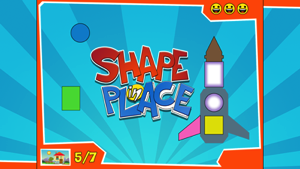Exploring geometric and spatial concepts via Puzzle making

Young students love puzzles. They offer a fun experience which also leads to the promotion of several skills including spatial skills. Spatial skills are necessary for understanding and appreciating the geometric aspects of our world. A number of studies discuss about the high correlations between puzzle performance and a range of spatial skills in elementary school-aged children.
During puzzle making, students use intuition as well as trial and error strategies to fit shapes together, to compose pictures, designs, shapes, and patterns using two-dimensional shapes. Teachers can encourage students to discuss how the shapes are put together and are combined to represent an object.
This is how the Shapes in Place game can be used in a classroom.
Students can interact and experiment with two-dimensional shapes, drag and arrange them to compose a picture of a real object, geometric pictures and tangrams. Once a puzzle is solved, they can continue to play the next puzzle chosen by a teacher.
With this game, the teacher can promote the growth of basic skills:
- Physical skills - Hand-Eye Coordination & Gross Motor Skills
- Cognitive skills - Patience, attention, visual perception
- social skills - Working together and discussing about what fits where and the characteristics of final outcome.
A set of reports produced during the game play can help teachers analyse the strengths and weaknesses of the young children using the puzzle making.
Are you ready to encourage your students try this game and become a great puzzle maker?